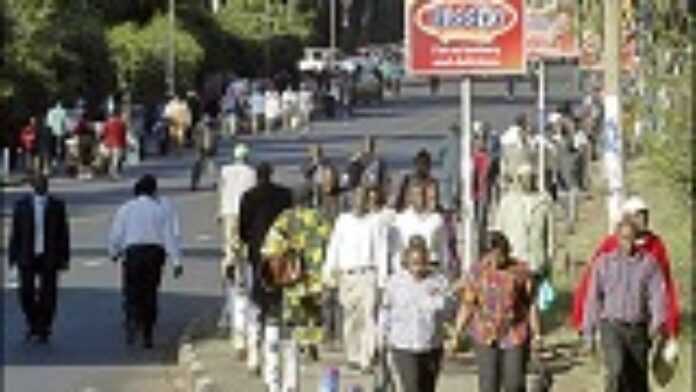
The Kenyan population has grown exponentially over the past 10 years reaching 38.6 million, up from the 28.7 million recorded in 1999, according to census data announced Tuesday. In addition to the simple counting of residents, the study collected information on education, housing, fertility and mortality rates as well as the tribal affiliation of respondents. This last point has, however, caused an uproar, at a time when the country is still recuperating from the political and ethnic violence that broke out after the disputed 2007 presidential election during which nearly 1,500 people were killed.
Identifying Kenyans by their ethnic origin has been bitterly condemned by some observers. They argue that the decision to take census figures, released Tuesday, pertaining to the ethnic or religious affiliations of Kenyans into account is in direct opposition to the spirit of cohesion of the new Constitution.
The census reveals that the Kikuyu, President Kibaki’s ethnic group, is the country’s largest representing 17% or 6.6 million of the total population. The Luhya ethnic group from western Kenya is second with 13%. The Kalenjin, former president Daniel Moi’s ethnic group, is in third position with 12%, while the Luo, Prime Minister Raila Odinga’s ethnic group, is ranked fourth with 10%.
Numerical strength
Early 2008, nearly 1,500 Kenyans were killed in post-election ethnic violence, and many political analysts fear that the publication of these results is tantamount to fanning ethnic divisions.
August 2009, before the exercise, a civil society organization, Tribe Kenya Group, called on Kenyans to refuse the part of the census that mentioned tribal affiliation arguing that such information could be utilized for political interests especially in the pending 2012 general elections.
Says James Mwamu, Secretary of the East African Law Society: “Politicians will immediately start looking for mechanisms to create alliances, based on the size of tribes”. According to him it could incite some politicians to claim key political positions, simply because of their tribe’s numerical strength.
Moreover, “the figures on tribe and religious affiliations may not be correct since many people declined to give details on the two categories during last year’s census,” Bishop Wasonga.
But Director General of Census, Anthony Kilele, believes that there is nothing political about the statistics per se, but rather in the way some people would use them.
The previous census organized by the authorities in 1989 and 1999 mentioned ethnicity, while the government has repeatedly defended its position on this year’s census. “The census is about collecting factual information and one’s ethnic origin is only a matter of fact,” read a statement from the National Bureau of Statistics.
Some have also argued that in other countries including the United States, ethnicity is routinely asked during census exercises.
Development plans
According to political analyst Jeremia Owiti, “a million people a year, is a source of concern”. Indeed, Kenya’s population is experiencing an annual growth rate of 1 million people, causing an imbalance in population growth vis-à-vis the national economic growth rate. The national census, the seventh since 1948 and the first since 1999, counted 38,610,097 Kenyans using various criteria, including education, housing, fertility and mortality.
Kenya’s Development Minister, Wycliffe Oparanya, insists that the strong growth observed could have a negative impact on spending, and advices that aggressive family planning programs should be launched.
The pioneering government policies that will accompany the implementation of the new Constitution will also depend largely on census data to provide guidance in the allocation and sharing of resources under the new system of devolved government.
And Mr Oparanya posits that the new census figures would help identify underdeveloped areas and their needs in terms of technology, education, health, electrification and other services. “The report will be crucial in poverty index surveys and help the government design better ways of dealing with the situation,” he says.
Over-stretched resources
The figures also indicate that in addition to rapid urbanization, population growth in Kenya is still heavy in a narrow stretch of arable land with a high population density, while vast tracts of the country are both under-populated and underdeveloped. Thus, development planning which has always targeted areas with high agricultural potential should be reconsidered.
The census also reveals that over 67% of Kenyans live in rural areas, only 63% of households own a mobile phone and a meagre 30% of the population has access to piped water.
The minister says a new census will be conducted in eight districts following some inconsistencies found in the population data for some areas in northern Kenya, which led to the region’s results being canceled. A decision that Rukia Subow, president of Maendeleo Ya Wanawake Organization (MYWO), the oldest women’s association in Kenya, finds particularly controversial.

